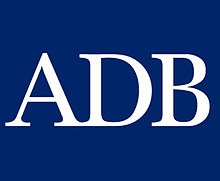ADB sees China’s GDP growing faster than India’s in 2017
13 Dec 2017
The Asian Development Bank (ADB) has revised downward India GDP growth to 6.7 per cent in 2017 and 7.3 per cent in 2018, despite signs of acceleration in growth rate, even as the bank said South Asia will remain the fastest growing of all sub-regions in Asia and the Pacific.
 China's economy is expected to grow faster at 6.8 per cent in 2017, although India's growth will gain pace in 2018, according to the Manila-based ADB.
China's economy is expected to grow faster at 6.8 per cent in 2017, although India's growth will gain pace in 2018, according to the Manila-based ADB.
While a strong manufacturing expansion in the second quarter of 2016 has helped the Indian economy reverse five consecutive quarters of deceleration, the recovery is more subdued than assumed earlier due to rising crude oil prices, soft private investment growth, and weather-related risks to agriculture, ADB noted.
"Owing to tepid growth in the first half of 2017-18, the lingering effects of demonetisation in November 2016, transitory challenges of a new tax system, and some risks to agriculture stemming from a spotty monsoon in 2017, the economy is now expected to grow by 6.7 per cent, slower than the 7 per cent forecast in the (September) Update," ADB said in a supplement to its Asian Development Outlook (ADO) today.
Growth prospects in the People's Republic of China (PRC) - the world's second largest economy - are revised up on resilient consumption. Growth in the PRC is now expected to expand faster, by 6.8 per cent, in 2017 and 6.4 per cent in 2018.
ADB has revised growth rate in East Asia upward to 6.2 per cent in 2017, from 6 per cent, while 2018 projections of 5.8 per cent are unchanged.
Growth for Southeast Asia is picking up faster than earlier forecast with GDP set to expand by 5.2 per cent in 2017 and 2018, compared to September 2017 forecasts of 5 per cent and 5.1 per cent.
ADB said the sub-region is benefiting from stronger investments and exports, with accelerating growth for Brunei Darussalam, Malaysia, the Philippines, Singapore, and Thailand. Infrastructure investment continued to play an important role in Indonesia, the Philippines, and Thailand. Robust domestic demand, particularly private consumption and investment, will continue to support growth in the sub-region, according to the report.
The outlook for Central Asia this year has further improved as stronger domestic demand and exports in some countries have fueled recovery in the sub-region. Growth is expected to reach 3.6 per cent in 2017 compared to the 3.3 per cent originally projected. The 2018 forecasts for Central Asia are unchanged at 3.9 per cent.
The ADB forecasts that economic expansion in developing Asia will accelerate to 6 per cent in 2017 as stronger than expected exports and domestic consumption fuel growth. Excluding Asia's newly industrialized economies, growth is now expected at 6.5 per cent this year, according to the ADB report.
In a supplement to its Asian Development Outlook Update 2017 report, ADB has upgraded its 2017 gross domestic product (GDP) outlook in the region by 0.1 percentage points compared to its September 2017 forecast, while its 2018 forecast remains unchanged at 5.8 per cent. An unexpectedly strong expansion in Central, East, and Southeast Asia has offset a downward adjustment in South Asia.
''Developing Asia's growth momentum, supported by recovering exports, demonstrates that openness to trade remains an essential component of inclusive economic development,'' said Yasuyuki Sawada, ADB's Chief Economist. ''Countries can further take advantage of the global recovery by investing in human capital and physical infrastructure that will help sustain growth over the long-term.''
ADB has revised upward its combined growth forecast for the major industrial economies to 2.2 per cent for 2017 and 2 per cent for 2018, due to robust domestic demand in the euro area, and in Japan due to private investment and net exports.
Growth projections for the United States remain unchanged at 2.2 per cent in 2017 and 2.4 per cent in 2018.
Growth in the Pacific is expected to remain at 2.9 per cent in 2017 and 3.2 per cent in 2018 with Papua New Guinea-the sub region's largest economy-continuing its gradual recovery due to rebounding mining and agriculture industries. Post-disaster reconstruction and tourism are expected to drive growth further in the sub-region, particularly in Fiji and Vanuatu.
Meanwhile, rising commodity prices have not yet driven inflation across the region, with consumer price inflation tame and stable. Price inflation is unchanged from previous projections of 2.4 per cent in 2017 and 2.9 per cent in 2018.
Established in 1966, ADB is celebrating 50 years of development partnership in the region. Owned by 67 members - 48 from the region - ADB assistance in 2016 totaled $31.7 billion, including $14 billion in cofinancing.






























